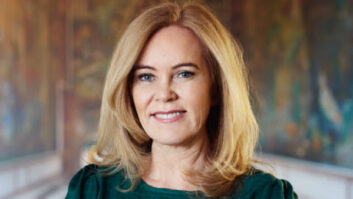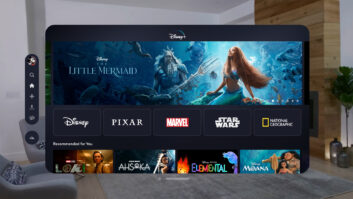Are profitable broadcasters meandering towards a similar fate to that of profitable newspapers of the mid-2000s? Savvy investors seem to think so, according to an Enders Analysis report released today which asserts that the recent merger plans of Warner-Discovery and TF1-M6 have “dramatically” accelerated consolidation up the agenda of the European commercial TV arena.
There are two models it toys with: the consolidation of national broadcasters at the domestic level; and consolidation of entities/groups at a continental/international level. However, given the absence of candidates to spearhead the latter path, the report leans to the former, national approach being seen with TF1/M6 as the more likely option.
The report points to the emergence over the last decade of the streaming giants – or “global vertically integrated content producers and distributors”, as Enders has them – of Netflix, Amazon, and more recently Disney Plus, and the extension of that model into Hollywood studios, plus the competitive forces of Facebook and Google all gorging away at broadcasters’ once veritable picnic.
And while broadcasters are still profitable, and some very much so says the report, “savvy investors believe this is looking suspiciously like the high earnings of printed newspapers circa 2007, or a Wile E. Coyote run over the edge of the cliff. Broadcasters are capturing a declining share of total video audiences and their capacity to finance attractive content is shrinking as talent is bid up by SVoD operators.”
The aforementioned marriages of convenience are seen as tactical moves by traditional broadcasting powers to armour themselves for a battle which although is being played out on their turf, is one where they have so far trodden less ground. Nevertheless, says Enders, broadcasters “still enjoy massive advantages. They still generate the great majority of video audiences; even at on-screen value that is one-hundredth of Hollywood’s flamboyant products, locally-produced content that is also locally relevant is massively preferred. The health crisis has shown that the blanket reach and high credibility of live television news coverage is intact. Video advertising remains the queen of commercial communication, towering over an ocean of annoying re-marketed clickbait.”
The report says that with broadcast TV viewing in steady decline, it sees two consolidation options emerging in the European sector. The first would be the creation (or consolidation) of national broadcasters with the content scale to compete with streaming platforms; Enders calls this the “Bertelsmann approach” (RTL Group).
This is what we’re seeing with TF1/M6; the (Bertelsmann) analysis being that domestic TV markets have seen their borders disappear to the boundless digital realm, with audiences and revenue following suit. The domestic market share held by national broadcasters simply isn’t as valuable in this new environment, and according to Bertelsmann’s analysis “taking into account that advertising markets remain partitioned by national boarders the priority must be domestic TV consolidation”.
The alternative path floated by Enders’ analysis is the idea of an entity/network mining continental scale, or “pan-European synergies leveraging increased international appetite for non-English language content”. The report’s example in this model is Italy’s Mediaset, which it says lacks capacity to deliver.
This path to consolidation would be to “return to where the RTL Group has failed and go for international scale. The traditional challenges with this model – low appetite for content and cross border advertising limitations – are now being challenged, according to the report. “Digital operators have demonstrated that significant economies of scale are to be found in advertising, even if the market is local; scripted content and on-demand algorithms have revealed the travel capacity of non-English language series – as with Netflix’s Lupin (in French), Dark (in German) and Money Heist (in Spanish); and at the lower end of the market, Discovery has shown that it can build scale in FTA TV. In the past ten years Discovery has possibly been the most successful new entrant of European commercial TV’s history, building audience shares of up to ten per cent in Scandinavia and Italy, five per cent in the UK and significant, if smaller, ones in Spain and Germany.”
However, the report goes on to discount its example in this model (Mediaset), due to its rather underwhelming track record in its online ventures, and in extracting synergistic value from its existing footing in Italy and Spain.
While alternative candidates such as Discovery and Vivendi were also reviewed and dismissed, the report was left to consider that, “In practical terms, the Bertelsmann consolidation path is the only one available now.”
Will the TF1 and M6 merger prove to be a forerunner of consolidations to come across Europe?







